It was dark when we arrived at Sarajevo. The bus station was eerily empty. Across the street, a concrete wall and guards marching. Of course, that would be the US Embassy.
Thankfully we were able to get in contact with our Airbnb hosts and grab taxis over to the apartment in the Bistrik neighborhood. The small two bedroom apartment had interesting decor (one room was all blindingly red), no sink in the bathroom and basically no hot water. But it worked. Plus, at $79 for 2 nights divided among 6 people, I’m not complaining.

WHERE EAST MEETS WEST
Sarajevo is distinctive because it feels a little like Turkey in one part of town, and then a few steps away it transforms to a Central European city. The city is rich in multicultural history in a way that no other European city is. A mosque, Catholic church, Orthodox church, and synagogue turned Jewish cultural center are all just blocks from each other. There’s traditional markets and cobblestone squares, and then paved roads, Austro-Hungarian façades and modern shopping malls along the same street.
[one_half padding=”0 2px 0 0px”]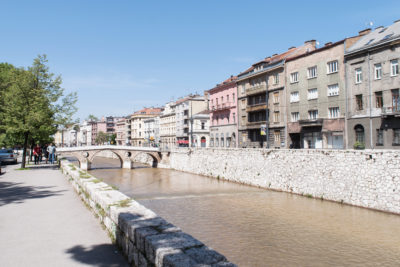 [/one_half][one_half_last padding=”0 0px 0 2px”]
[/one_half][one_half_last padding=”0 0px 0 2px”]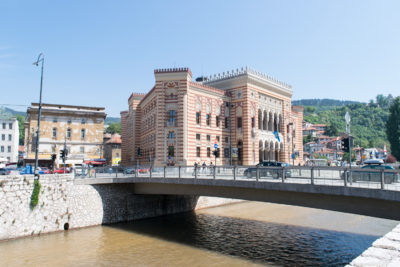 [/one_half_last]
[/one_half_last]
We started off the day by crossing the Miljacka river into the Baščaršija neighborhood. Baščaršija is the historic core of the city, home to the old bazaar and iconic Sebilj fountain. The streets are lined with cafés, hidden courtyards filled with outdoor hookah lounges. We grabbed a table outside, surrounded by historic buildings that tell the stories of eras past.
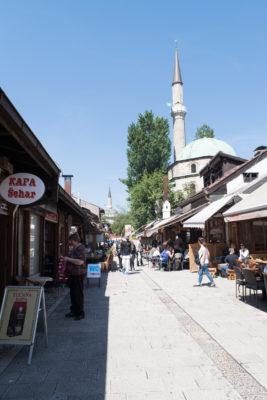
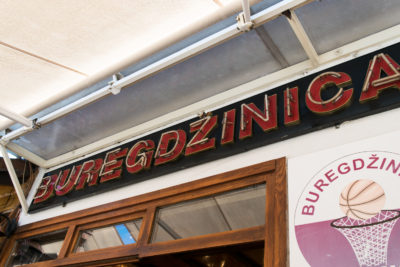
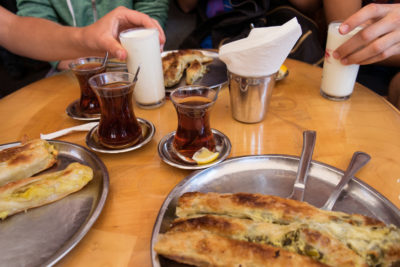
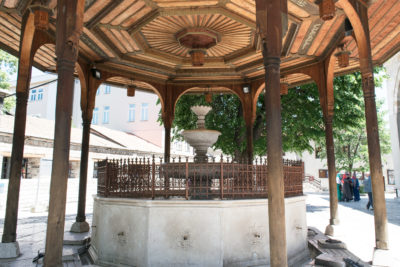
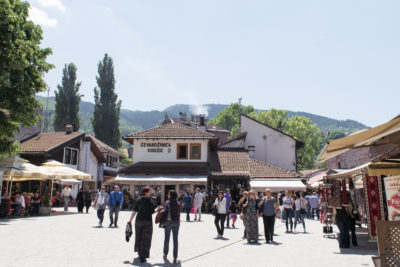
As we continued walking west, the cityscape abruptly changed. East meets west, and the Baroque architecture transported me back to the streets of Zagreb. We passed the eternal flame monument dedicated to the victims of World War II and continued on to Veliki Park and the BBI Centar. Veliki Park is the biggest green space in the city center and is also home to a memorial dedicated to the children who died in the Bosnian war.

[one_third padding=”0 2px 0 0px”]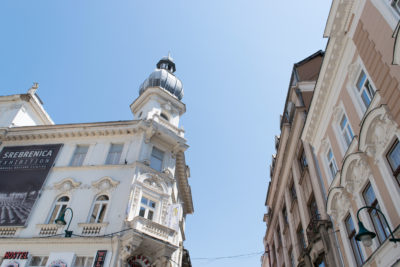 [/one_third][one_third padding=”0 1px 0 1px”]
[/one_third][one_third padding=”0 1px 0 1px”]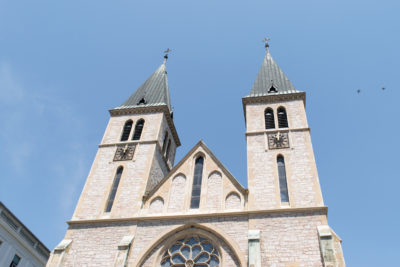 [/one_third][one_third_last padding=”0 0px 0 2px”]
[/one_third][one_third_last padding=”0 0px 0 2px”]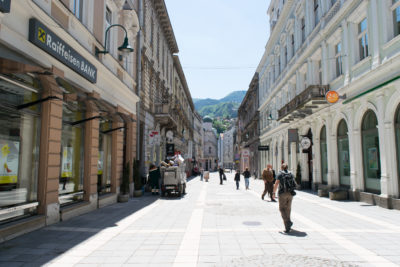 [/one_third_last]
[/one_third_last]
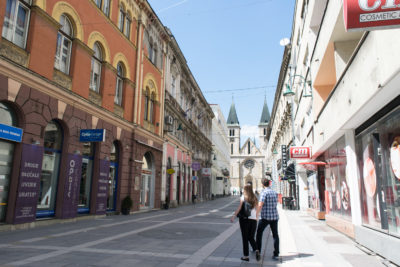
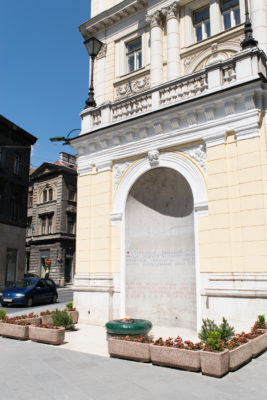
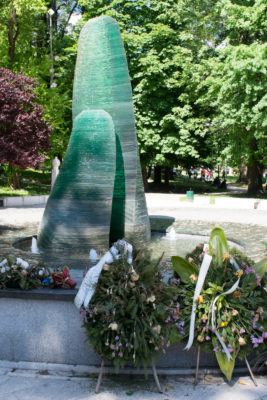
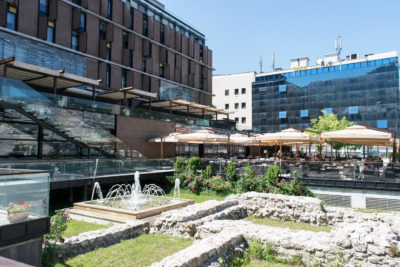
Eventually, we headed back to the “east” side to lounge with coffee and hookah.
Nearby on an unassuming bridge across the Miljacka is something from all our history books. The Latin Bridge: the site of the assassination of Archduke Franz Ferdinand which catapulted the Europe into World War I.
[one_half padding=”0 2px 0 0px”]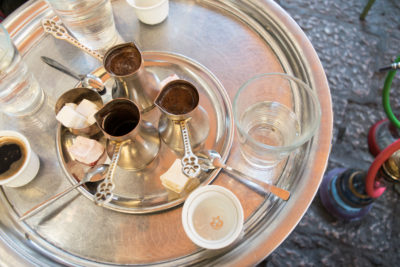 [/one_half][one_half_last padding=”0 0px 0 2px”]
[/one_half][one_half_last padding=”0 0px 0 2px”]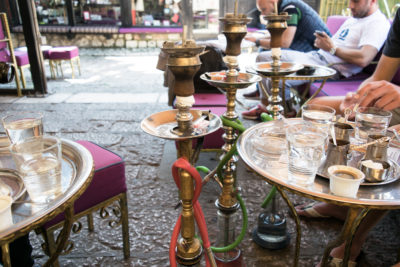 [/one_half_last]
[/one_half_last]
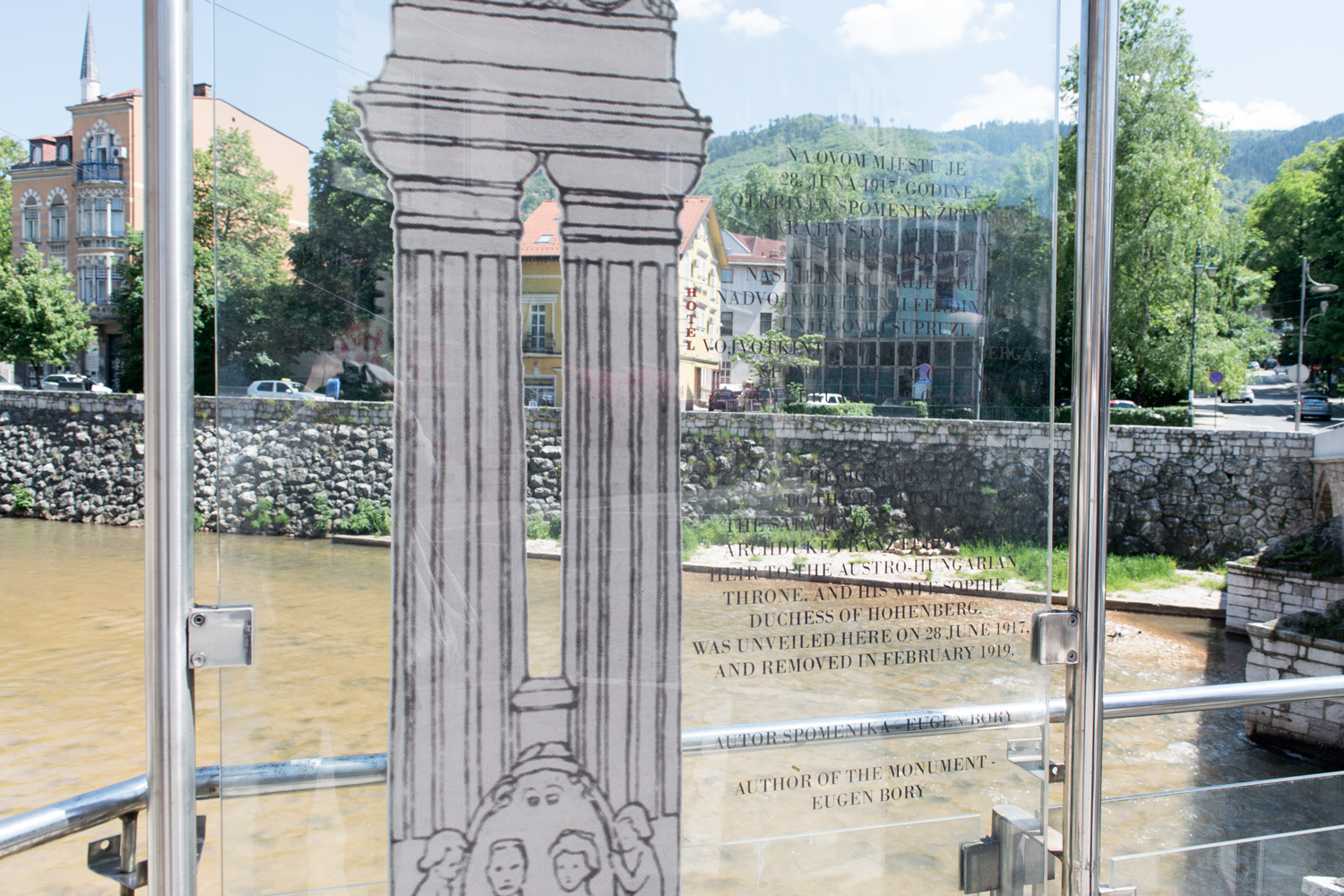
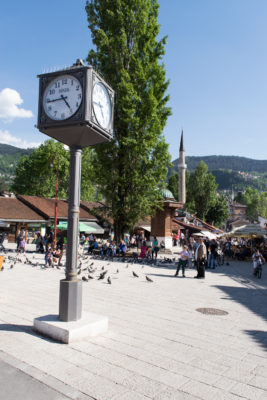
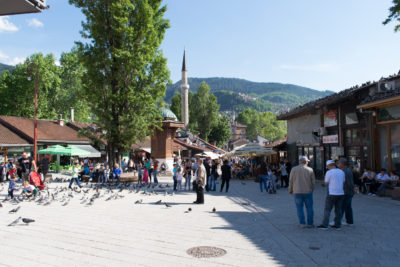
LEARNED HISTORIES AND BORROWED MEMORIES
The next stop was further away. We took a tram further east to the Hrasno neighborhood. The trams looked like they barely survived the war, but the buildings in this part of town looked worse.
Having grown up in America, I’ve been privileged enough to never encounter a war zone or even a place recovering from this kind of violence. The Bosnian War may have ended over two decades ago, but they still can’t afford to fully rebuild. So every other block, there’s a demolished or abandoned building. And even the inhabited apartment buildings are ridden with bullet holes.
While the physical evidence of war was jarring, I felt even more overpowered by the psychology of trauma that remained, the sensitivities between different ethnic groups, the way the Croatians and Bosnians talked about Yugoslavia and the war not as history, but as memory.
The quiet streets and eerie buildings starkly were a stark contrast to Palma. This outdoor garden café was like a romanticized mid-century oasis straight out of a movie. We joined dozens socializing in the courtyard to enjoy decadent desserts, with a pianist rounding out the picture perfect scene. If you ever go, do yourself a favor and order everything. It’ll cost a fraction of what it would in another European city, so you can’t even feel too guilty!
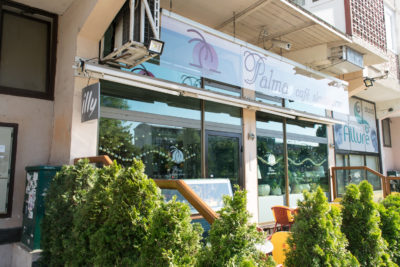
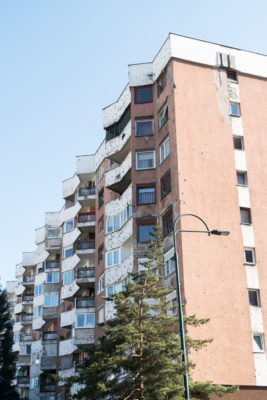
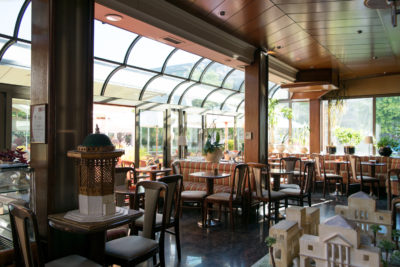
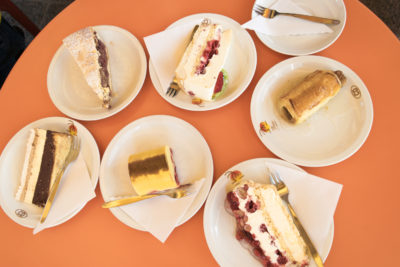
IN SEARCH OF A GOOD VIEW
Finally, we rounded out the day going to the highest point in the city. The Avaz Twist Tower is the tallest building in the Balkans, which at 176m is not all that formidable…but we’re in the Balkans! For comparison, it’s about 1/5 the height of the tallest building in the world (Burj Khalifa in Dubai), and less than half the height of the Empire State Building. Even the Eiffel Tower dwarfs it.
But that’s besides the point. The view from the top is worth the trip. We were there at the brink of golden hour, and the light hit the hazy landscape in a warm glow. Silhouettes of mosques in the dark green hills. The walled US Embassy below. Train tracks cutting the landscape. Layers of mountains fading into the horizon. The perfect end.
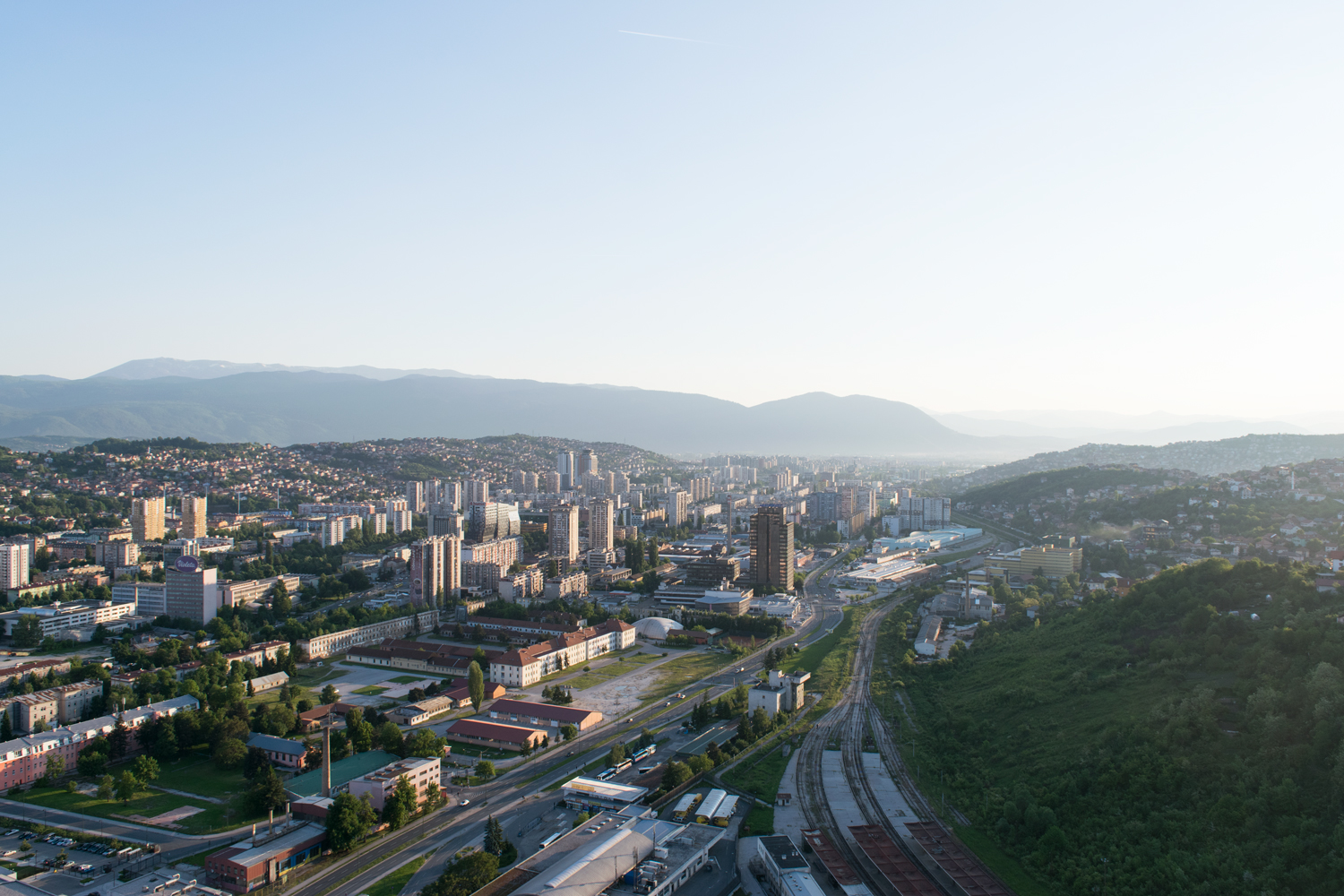
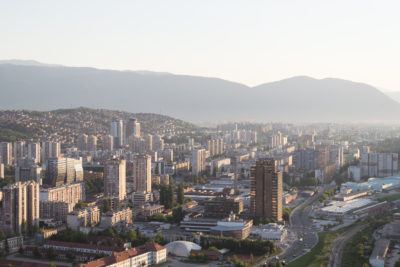
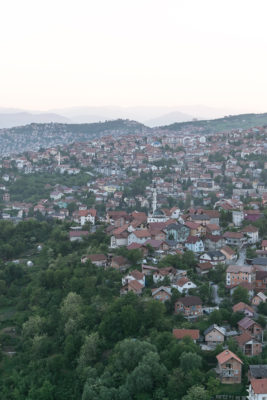
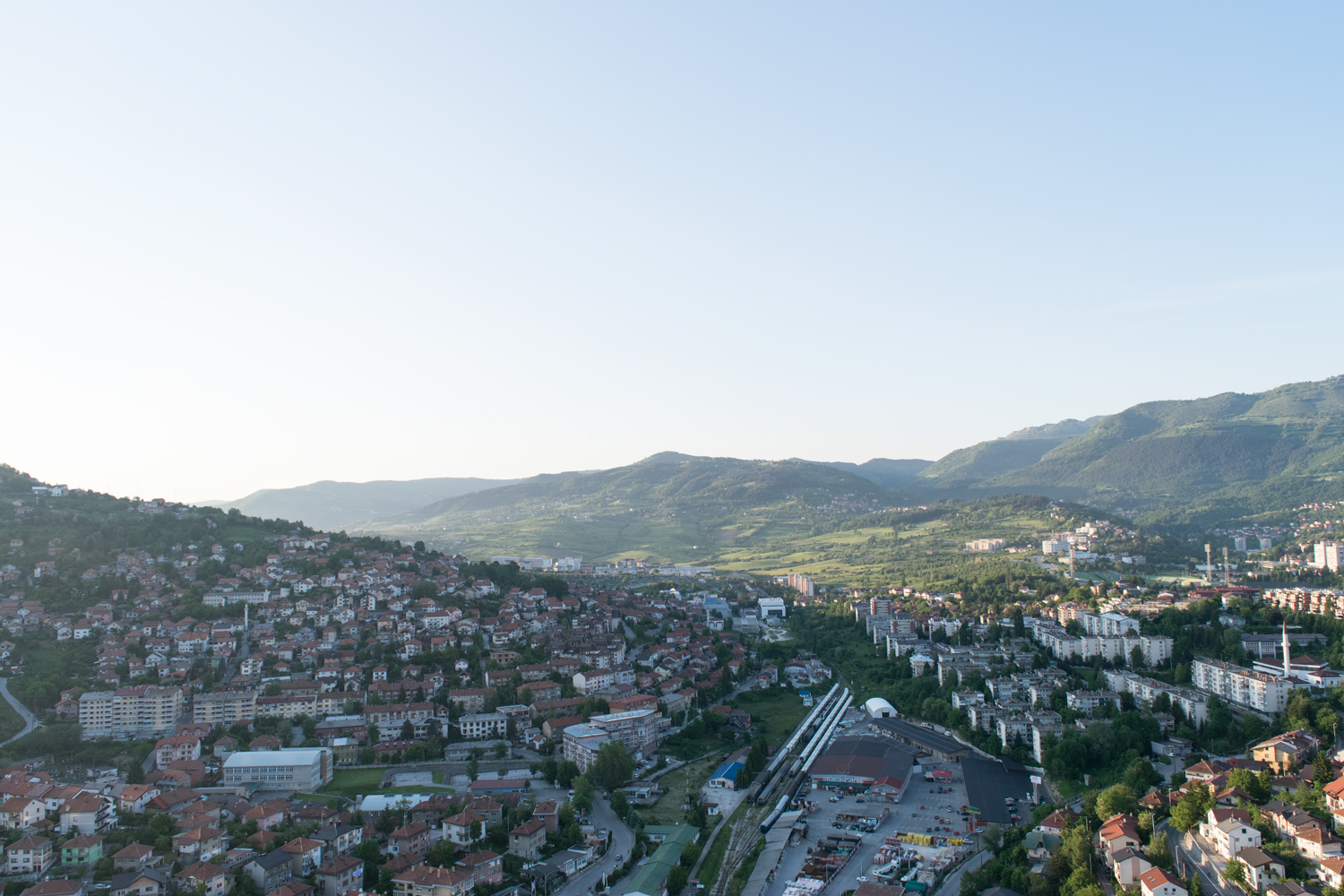
HOME SWEET SPLIT
Of course, this wasn’t really the end. We still had that night, and then the next morning before catching an afternoon bus out of Sarajevo. But by this time I was feverishly fatigued so the rest of the journey was a blur.
However, I do remember how brutal the bus ride back was. It took 6 hours to travel 150 miles. We stopped at every town and farm. At one point, we even stopped at someone’s house to deliver a package. When we finally got to the Croatian border, we were stopped because of my Greek friend’s ID. They nearly sent us back to Sarajevo for not registering our lodging upon arrival. Note to prospective travelers: in the Balkans, always make sure to register with local authorities within 24hrs of arriving. Most hotels do this for you, but if you stay at an Airbnb, be proactive and check! There is information on the US Travel State website.
We ended up being ok. My friends were convinced that my US passport was enough to carry the rest of us back safely. I guess it does help to be American! Remembering the formidable embassy in Sarajevo, I hardly blame them for not wanting to cause a fuss.
I was so happy to be home at our crowded hostel. It was one of the last times I’d come home to this place that felt so familiar. It’s hard to imagine that a little over a month ago all of Split was foreign to me. The foreign becoming familiar – that’s the true magic of travel.